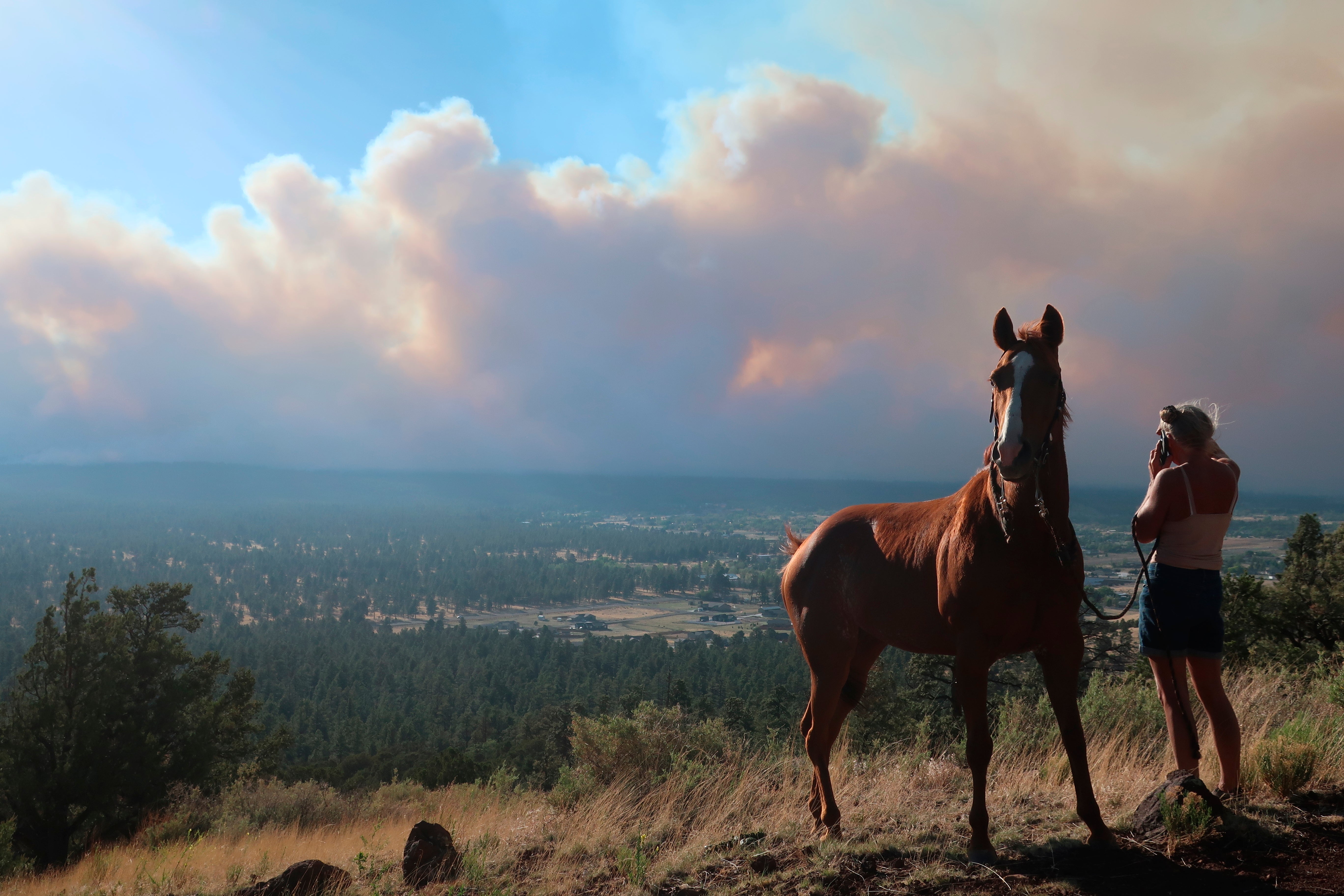Colorado blanketed in smoke as fires burn 400 miles away
The Pipeline Fire in Arizona is sending smoke across the country
Your support helps us to tell the story
From reproductive rights to climate change to Big Tech, The Independent is on the ground when the story is developing. Whether it's investigating the financials of Elon Musk's pro-Trump PAC or producing our latest documentary, 'The A Word', which shines a light on the American women fighting for reproductive rights, we know how important it is to parse out the facts from the messaging.
At such a critical moment in US history, we need reporters on the ground. Your donation allows us to keep sending journalists to speak to both sides of the story.
The Independent is trusted by Americans across the entire political spectrum. And unlike many other quality news outlets, we choose not to lock Americans out of our reporting and analysis with paywalls. We believe quality journalism should be available to everyone, paid for by those who can afford it.
Your support makes all the difference.Colorado residents are experiencing smoky skies - but not due to fire burning in their state.
Smoke from the Pipeline Fire near Flagstaff, Arizona has drifted across state lines and is shrouding cities like Boulder and Denver.
In areas with smoky skies, “unusually sensitive people should consider reducing prolonged or heavy exertion,” noted the Colorado Department of Public Health and Environment (CDPHE) on Monday.
The Pipeline Fire started on Sunday about six miles outside Flagstaff, in northern Arizona. It has burned through about 4,500 acres — about five and a half times the size of New York City’s Central Park — and prompted evacuations of nearby areas.
Satellite footage from the National Oceanic and Atmospheric Administration shows smoke from the blaze pouring over Colorado, and spreading even further east, past Chicago and the Midwest.
CDPHE says that while “widespread public health impacts are not anticipated at this time,” smoky skies could continue through Wednesday morning.
If visibility in an area is less than five miles, they add, the smoke has reached unhealthy levels.
Several fires ignited over the weekend in the Southwest as scorching temperatures baked the region and pushed the mercury way above 100 degrees Fahrenheit (38C).
Devastating fires have already burned through parts of the US this year, with the burning season getting off to an early start.

In New Mexico, the Calf Canyon/Hermits Peak blaze has become the largest in state history, roaring through over 320,000 acres — about 80 per cent the size of London.
And in southern California, a wildfire ripped through multi-million dollar homes in the town of Laguna Niguel.
As of Monday, 2,477,977 acres across the county had burned this year — half the size of Wales, and more than double the ten-year average of 1,082,125 acres, according to the National Interagency Fire Center.
The climate crisis is expected to increase the risk of wildfires across the US as temperatures rise and dry periods get more common.
A recent report found many homes in the American West are at serious risk of wildfire over the next 30 years, with the risk increasing as the climate crisis accelerates.




Join our commenting forum
Join thought-provoking conversations, follow other Independent readers and see their replies
Comments